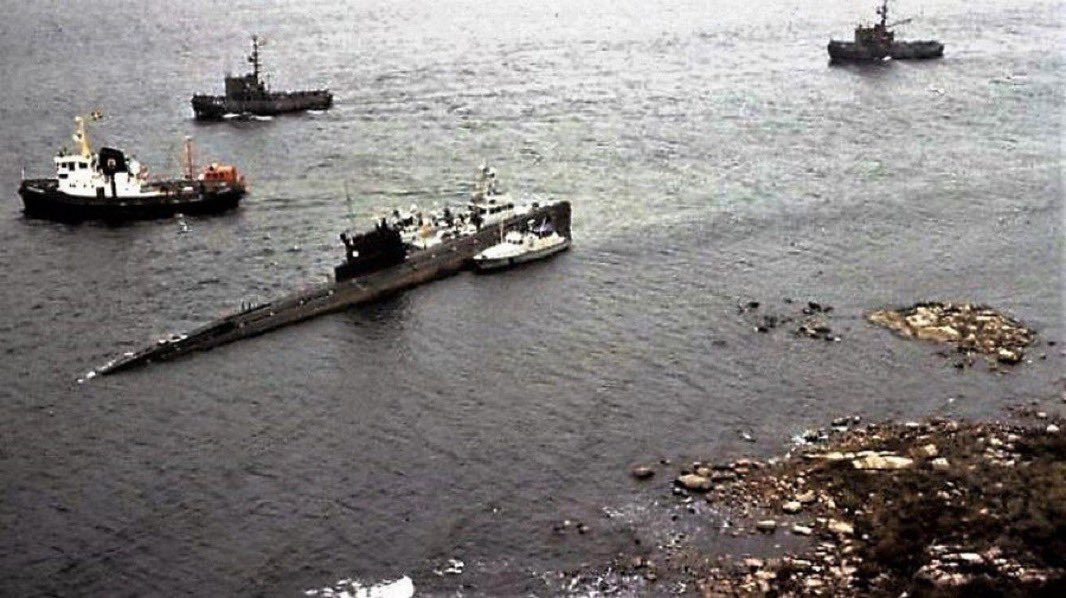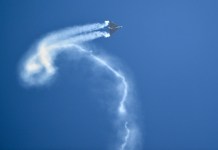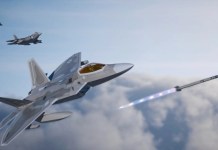In a world where spy drones and satellite surveillance dominate the warzone, it’s easy to forget the days when submarines lurking in foreign waters were a primary mode of covert operations.
One of the most notable events took place on October 27, 1981, when a Soviet submarine made an unexpected incursion into Swedish waters, triggering a dramatic Cold War confrontation that became known as the “Whiskey on the Rocks” incident.
During the 1980s, Scandinavian waters frequently experienced unauthorized underwater incursions. These incidents highlighted the intense geopolitical tensions of the time, with submarines acting as both silent observers and potential aggressors in the high-stakes game of espionage and military maneuvering.
Among these incursions, none became as notorious as the grounding of a Soviet Whiskey-class submarine, which occurred alarmingly close to a sensitive Swedish military installation.
When the Soviet submarine ran aground in Swedish territorial waters, it set off a tense ten-day standoff between Swedish and Soviet authorities.
The drama began on the morning of October 28, 1981, when two Swedish fishermen, Ingvar Svensson and Bertil Sturkman, were hauling their catch near Karlskrona. As they worked, they noticed a mysterious oil slick on the water.
‘1st Asymmetric Warfare-Capable Systems Under Biden’ — Taiwan Hails NASAMS Sale; China Furious

Although they initially returned home, Sturkman was troubled by the sight and decided to investigate further. To his astonishment, he discovered a seventy-six-meter-long submarine wedged on its starboard side against the rocky outcrops of Torumskär island.
As he approached, Sturkman could see a man on the submarine’s tower, scanning the horizon with binoculars. However, he quickly realized that he was not merely observing; he was armed with a machine gun. Alarmed, he retreated and promptly reported his findings to the naval base in Karlskrona, home to two of Sweden’s three coastal defense flotillas.
Karlskrona was strategically protected from potential attacks, nestled in a shallow bay surrounded by rocky islands that demanded careful navigation. Yet, somehow, the Soviet submarine had managed to navigate this treacherous aquatic landscape to a point just six miles from the base, raising significant concerns for Swedish authorities.
In response, the naval base commander dispatched warships to investigate. Upon arrival, the situation escalated into a full-blown international incident.
The grounded submarine was identified as S-363, a Soviet Whiskey-class coastal patrol submarine. This particular class, known in the West as “Whiskey,” was part of a broader category of submarines that had been extensively produced by the Soviet Union.
Shot Dead In A Submarine –The Nerve-Wracking Story Of N.Korean Commandos & Their Failed Espionage
The patrol boat Smyge was among the first to reach the grounded vessel, where Commander Karl Andersson communicated with crew members in German.
The submarine crew explained that the submarine had strayed off course due to a malfunctioning navigation system. Due to the submarine’s precarious position, this incident earned its moniker “the Whiskey on the Rocks.”
The S-363 was a short-range diesel-electric submarine, originally designed in the 1940s with snorkel and battery technology adapted from the Nazi Type XXI “electric boat.” Over two hundred of these submarines were constructed by the Soviet Union, underscoring their significance in Cold War naval operations.
‘Whiskey On The Rocks’
During the Cold War, Sweden maintained a nominal stance of neutrality; however, its apparent alignment with Western powers spurred intensified Soviet surveillance efforts in the region.
Sweden’s extensive coastline along the Baltic Sea was strategically positioned near Leningrad and various Soviet military installations located in the Baltic states and Poland.
Despite international regulations designating a nation’s territorial waters as extending twelve nautical miles (about fourteen miles) from its coastline and island territories, Soviet submarines repeatedly intruded into Swedish waters throughout the 1960s and 1970s.
On the night of October 27, 1981, the Swedish submarine Neptune, alongside two helicopters, was conducting tests of a new type of torpedo—an event that likely piqued Soviet interest.
On the same day, the Soviet submarine S-363 ran aground, which raised the possibility that its presence in the area was not merely the result of a navigational error. Instead, it suggested that the submarine was likely engaged in surveillance operations, possibly monitoring Swedish naval activities or gathering intelligence.

The Swedish government sought to interrogate the vessel’s captain, A. M. Gushchin, while the Soviet Union contended that S-363 had strayed into Swedish waters in search of assistance despite the absence of any distress signals from the submarine.
In the meantime, Swedish radar detected a Soviet naval task force comprising around a dozen ships heading toward S-363. Commanded by Admiral A. Kalinin, the fleet included the missile destroyer Obraztsovy, an older gun-armed destroyer, two anti-ship missile boats, a frigate, and a tugboat.
To counter the advancing Soviet fleet, the submarine Neptune delayed its approach, while the icebreaker Thule was strategically positioned to block access to S-363.
As the Soviet vessels drew closer, coastal artillery systems activated their targeting radars, designed to switch between frequencies to avoid retaliatory strikes. This prompted the Soviet warships to come to a halt.
However, a lone tugboat continued its advance until it was intercepted by Swedish torpedo boats, effectively preventing it from reaching the grounded submarine.
Navigational Errors & Nuclear Revelations
On October 28, 1981, the Swedish Cabinet convened multiple times to outline conditions for the release of the Soviet submarine. The Swedish government demanded a formal apology from the Soviet Union, insisted that salvage operations be conducted by Swedish personnel at Soviet expense, and required the submarine’s captain to cooperate fully in an investigation.
During this tense standoff, radio communications from the submarine were heavily monitored. Mobile jammers deployed to the area thwarted attempts to communicate on unauthorized frequencies.
After a protracted dialogue between the submarine and Soviet Baltic Fleet headquarters, the Soviets ultimately acquiesced to the Swedish demands, though they maintained their narrative of a navigational error as the cause of the incident.
On November 2, Captain A. M. Gushchin and political officer Vassily Besedin submitted to a six-hour interrogation aboard the Swedish torpedo boat Vastervik.
Gushchin claimed that the S-363 had suffered a failure of all four navigational systems, causing it to drift a staggering hundred miles off course from Poland.

However, Swedish officials met this assertion with skepticism, noting that navigating so far into Karlskrona Bay would require numerous precise maneuvers—errors of such magnitude would be “worthy of the Guinness Book of World Records.”
As the inquiry progressed, deteriorating weather conditions forced the submarine’s crew to fire distress flares. Swiftly, Swedish naval units responded, pulling the submarine from the rocks and anchoring it in safer waters.
The following day, Captain Gushchin reboarded the vessel to receive the Swedish investigators, who found that the submarine’s navigation equipment, although outdated, appeared to be functioning adequately.
Just as the situation seemed to be resolving, Prime Minister Torbjörn Fälldin made a shocking announcement on November 5, revealing that radioactive material, likely Uranium-238, had been detected aboard the submarine.
This revelation raised alarm bells, as the Soviet Union had previously developed nuclear torpedoes during the 1950s. The implications of this discovery soured the lighthearted jokes about “Whiskey on the Rocks” as the Swedes faced the reality of potential nuclear armament on their doorstep.
In response to diplomatic protests, the Soviets defended their submarine’s armament as “appropriate for its mission.” Finally, on November 6, the S-363 was towed out to sea, rejoining its Soviet escorts and returning to its base at Liepaja on November 7.
Later, political officer Besedin revealed to a Swedish journalist that their orders were to detonate the submarine along with its crew if Swedish forces attempted to seize it. He noted that the torpedo tubes contained nuclear warheads, the explosion of which would have caused destruction comparable to the Hiroshima bomb, with devastating long-term effects for Sweden.
However, Commander Karl Andersson challenged Besedin’s claims, suggesting that the submarine would have been scuttled by damaging the propeller shaft and valves instead of using nuclear detonations.
- Contact the author at ashishmichel(at)gmail.com
- Follow EurAsian Times on Google News




